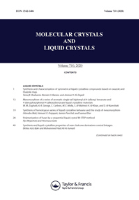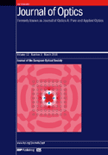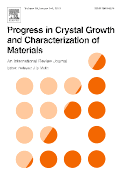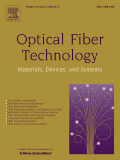
Chinese Journal of Liquid Crystals and Displays
Scope & Guideline
Showcasing Cutting-edge Developments in Display Science
Introduction
Aims and Scopes
- Liquid Crystal Material Research:
The journal emphasizes the development and characterization of various liquid crystal materials, including their optical and electrical properties, with applications in display technologies and photonics. - Display Technology Innovations:
It covers advancements in display technologies, including LCDs, OLEDs, Micro-LEDs, and emerging technologies that enhance visual performance and energy efficiency. - Imaging and Optical Methods:
Research on imaging techniques, such as image processing, enhancement algorithms, and optical systems, is a key focus, linking display technologies with practical applications in various fields. - Device Fabrication and Integration:
The journal highlights studies on the fabrication processes of liquid crystal devices and their integration into systems, ensuring that technological innovations are practical and scalable. - Applications in Various Domains:
It explores the application of liquid crystals and display technologies in areas such as healthcare, remote sensing, and consumer electronics, showcasing their versatility and impact.
Trending and Emerging
- Flexible and Wearable Displays:
There is a growing emphasis on flexible and wearable display technologies, driven by consumer demand for portable and adaptable electronic devices. - Integration of AI and Machine Learning:
The application of AI and machine learning techniques in image processing and display optimization is becoming increasingly prominent, indicating a cross-disciplinary trend. - Sustainability and Eco-Friendly Materials:
Research on environmentally friendly materials and sustainable practices in the development of display technologies is gaining traction, reflecting a global push towards sustainability. - Advanced Imaging Techniques:
Innovations in imaging techniques, including 3D imaging and augmented reality applications, are trending, showcasing the integration of liquid crystals in cutting-edge technologies. - Quantum Dot and Perovskite Technologies:
There is a notable increase in research related to quantum dots and perovskite materials for display applications, highlighting the pursuit of next-generation displays with improved performance.
Declining or Waning
- Traditional LCD Technologies:
There is a noticeable decrease in publications focused solely on traditional LCD technologies, as the field shifts towards more advanced display solutions like OLED and Micro-LED. - Basic Theoretical Studies:
The journal has seen fewer articles dedicated to foundational theoretical studies of liquid crystals, with a trend towards applied research and practical device innovations instead. - Static Liquid Crystal Applications:
Research topics related to static applications of liquid crystals, such as simple displays without dynamic capabilities, are becoming less common as interest grows in more dynamic and multifunctional uses.
Similar Journals

Optics
Connecting Researchers Through Open Access OpticsOptics is a pioneering open access journal published by MDPI, dedicated to advancing the field of optics and photonics. Since its inception in 2020, the journal has fostered the dissemination of high-quality research and innovative developments in optical sciences, contributing significantly to its community of researchers, professionals, and students in Switzerland and beyond. With an impact factor reflective of its growing prominence, Optics strives to address a diverse scope, encompassing atomic and molecular physics, electronic materials, and broader topics in physics and astronomy. The journal's commitment to open access ensures that cutting-edge research is freely available, promoting collaboration and knowledge-sharing across disciplines. As of 2023, it holds a Q4 ranking in several categories, including Atomic and Molecular Physics, and Optics, which illustrates its evolving role in the academic landscape, positioning it as a valuable resource for those seeking to explore the frontiers of optical technology and its applications.

APPLIED OPTICS
Empowering Discoveries in PhotonicsApplied Optics, published by Optica Publishing Group, is a prestigious journal dedicated to the field of optics and photonics. With an ISSN of 1559-128X and an E-ISSN of 2155-3165, this journal serves as a critical platform for researchers, professionals, and students eager to disseminate innovative findings and advancements in applied optics. Established in 1962, it has maintained a significant presence in the academic community, currently holding a Q2 category ranking in various disciplines including Atomic and Molecular Physics, Electrical and Electronic Engineering, and Miscellaneous Engineering as per the 2023 metrics. The journal's reputation is underscored by its solid Scopus rankings, attesting to its influential research output. While not an open-access journal, it continues to offer vital insights and discussions on the latest research topics that are critical to the advancement of technologies in optics, ensuring accessibility to vital knowledge for those within the field.

eLight
Illuminating the Future of Atomic and Molecular PhysicseLight is a leading academic journal published by SPRINGER NATURE, dedicated to the dynamic field of Atomic and Molecular Physics, as well as Electronic, Optical, and Magnetic Materials. Launched in 2021, the journal has quickly established itself as a reputable source of cutting-edge research, evidenced by its impressive Q1 quartile rankings in both categories for 2023, alongside remarkable Scopus rankings that place it in the top 2% of its fields. With a commitment to advancing knowledge and fostering innovation, eLight invites contributions from researchers, professionals, and students who are passionate about exploring new frontiers in these critical areas of study. Hitting a critical intersection of physics and materials science, the journal provides an open forum for the dissemination of experimental findings, theoretical studies, and application-based research, ensuring accessibility to vital discoveries that drive progress in technology and academia. Located in Singapore, eLight is poised to make significant contributions to the scientific community until at least 2024, and beyond.

Journal of Nanophotonics
Exploring the Nanoscopic World of Light and MatterThe Journal of Nanophotonics, published by SPIE-SOC Photo-Optical Instrumentation Engineers, is an esteemed platform dedicated to advancing the field of nanotechnology through pioneering research in photonics. Since its inception in 2007, this journal has become instrumental in disseminating innovative findings and fostering collaborative discussions, especially in the domains of Condensed Matter Physics, Electronic, Optical and Magnetic Materials, and Nanoscience and Nanotechnology. Currently ranked within the Q3 category across these fields, it serves as a vital resource for academics, industry professionals, and students keen on exploring the multifaceted applications and implications of nanophotonic technologies. With its convergence set to continue until 2024, the journal offers a non-open-access model, ensuring rigorous peer-review standards and high-quality publications that contribute to the global body of knowledge.

Liquid Crystals and their Application
Bridging Theory and Application in Liquid Crystal ResearchLiquid Crystals and Their Application, published by Ivanovo State University, is a pivotal journal dedicated to the exploration and dissemination of research in the field of liquid crystal science and its diverse applications. With an ISSN of 1991-3966, this journal aims to bridge the gap between fundamental studies and practical implementations, thereby contributing significantly to interdisciplinary fields such as biomaterials and materials science. Although the journal currently holds a Q4 ranking across various categories such as Biomaterials and Materials Chemistry for 2023, it is positioned to enhance its impact through high-quality peer-reviewed articles that reflect advancements in liquid crystal technology. With a geographic focus on the Russian Federation, this journal encapsulates the innovative research environment in the region while catering to a global audience of researchers, professionals, and students interested in the latest breakthroughs. While the journal is not open access, it maintains a commitment to academic integrity and high standards, inviting contributions that will elucidate the evolving landscape of liquid crystals from 2016 through 2024 and beyond.

MOLECULAR CRYSTALS AND LIQUID CRYSTALS
Innovating Insights in Molecular and Liquid CrystalsMOLECULAR CRYSTALS AND LIQUID CRYSTALS is a distinguished journal published by Taylor & Francis Ltd, dedicated to the comprehensive examination of the structural and physical properties of molecular crystals and liquid crystals, with applications spanning fields such as chemistry, materials science, and condensed matter physics. Established in 1972, this journal has carved out a niche in the academic landscape despite facing recent challenges, as reflected in its current quartile rankings of Q4 across multiple categories in 2023. The journal not only serves as a platform for groundbreaking research but also invites contributions that further explore the intricate relationships between molecular organization and material properties, thereby advancing our understanding of these fascinating substances. With a commitment to fostering scientific dialogue, MOLECULAR CRYSTALS AND LIQUID CRYSTALS aims to reach a broad audience of researchers, professionals, and students, providing insights that are pivotal in driving innovation in materials research.

Journal of Optical Microsystems
Pioneering Insights in Atomic, Molecular, and Material SciencesJournal of Optical Microsystems, published by SPIE-SOC PHOTO-OPTICAL INSTRUMENTATION ENGINEERS, is a premier open-access journal dedicated to advancing the field of optical microsystems. With a focus on the intersections of Atomic and Molecular Physics, Electrical Engineering, and Materials Science, this journal has quickly emerged as a key resource since its inception in 2021, currently maintaining a Q2 ranking in multiple relevant categories. Although it is relatively new, its impact within the academic community is reflected in its percentile rankings, positioning it among the top-tier journals. The Journal provides a platform for researchers, professionals, and students to publish and access cutting-edge studies that explore innovative applications of optical technologies. With its commitment to disseminating high-quality research and the growing importance of optics in technology, the Journal of Optical Microsystems plays a critical role in bridging the gap between theoretical advancements and practical applications in the field. Located in the United States, it is poised to connect an international audience eager to contribute to and benefit from developments in optical and electronic materials.

Journal of Optics
Connecting Innovators in Optical MaterialsThe Journal of Optics, published by IOP Publishing Ltd, stands as a pivotal platform for disseminating cutting-edge research in the fields of atomic, molecular physics, and optics as well as electronic, optical, and magnetic materials. With an impact factor reflective of its esteemed position—ranking in the 60th percentile in both relevant Scopus categories—this journal, boasting an ISSN of 2040-8978 and an E-ISSN of 2040-8986, is uniquely positioned to foster innovation and collaboration among researchers, professionals, and students worldwide. Located in the United Kingdom and operational since 2010, the journal embraces an open access model, promoting maximal reach and engagement with the latest discoveries that shape the future of optics. As it continues to evolve through its converged years up to 2024, the Journal of Optics remains a critical resource for those seeking to advance their knowledge and influence in this dynamic field.

PROGRESS IN CRYSTAL GROWTH AND CHARACTERIZATION OF MATERIALS
Charting New Territories in Crystal ResearchPROGRESS IN CRYSTAL GROWTH AND CHARACTERIZATION OF MATERIALS, published by Pergamon-Elsevier Science Ltd, is a premier journal dedicated to the advancement of knowledge in the fields of condensed matter physics and materials science. With an ISSN of 0960-8974 and an E-ISSN of 1878-4208, this esteemed journal has been at the forefront of research since its inception in 1990 and continues to publish cutting-edge findings until 2024. Recognized as Q1 in Condensed Matter Physics and Q2 in Materials Science (miscellaneous) as of 2023, it holds impressive Scopus rankings, placing it in the 89th and 81st percentiles of its respective categories. The journal aims to foster innovation and facilitate the exchange of ideas among researchers and professionals by showcasing significant developments in crystal growth and material characterization methodologies. Although it currently does not offer open access, the journal remains a vital resource for academia, providing comprehensive insights that drive forward the fields of physics and materials science, thereby benefiting both seasoned researchers and students alike.

OPTICAL FIBER TECHNOLOGY
Innovating the Future of Light and ConnectivityOPTICAL FIBER TECHNOLOGY is a premier journal in the fields of atomic and molecular physics, optics, control and systems engineering, as well as electrical and electronic engineering, published by ELSEVIER SCIENCE INC. With an ISSN of 1068-5200 and E-ISSN 1095-9912, it offers a platform for disseminating cutting-edge research and developments in optical fiber technology and its applications. The journal has achieved a notable impact, ranking in the second quartile for multiple categories in 2023, including control and systems engineering and electronic, optical, and magnetic materials. By providing a robust avenue for peer-reviewed articles, OPTICAL FIBER TECHNOLOGY caters to a diverse audience of researchers, professionals, and students dedicated to advancing knowledge and innovation in optics and related fields. This respected journal is particularly suited for those seeking to stay updated on the latest technological advancements and research trends, ensuring its relevance in both academic and industrial contexts.